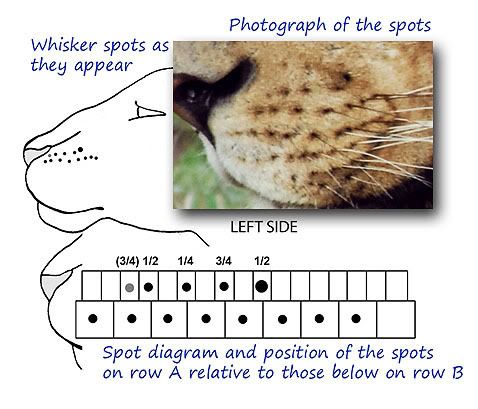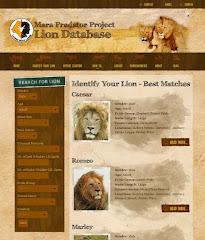All is not well with the Maternity lions. Last night on the rounds, the three young males from across the Mara River had joined Asali, Mandisa and Caesar in Military Bush. When I first arrived on the scene, none of the lions looked particularly uncomfortable with the situation, until I took a closer look and counted not three cubs, but only two.
The true extent of the matter between the Maternity lions and these three punks became apparent as one of the boys, Marley, stood up, stretched and then limped closer to our gang. He'd obviously been in a fight. Caesar responded immediately and approached the young male, closely followed by Asali in defence of her cubs. Marley adopted a submissive posture and only warning swipes were exchanged, but judging by the lions' reactions, the tension between both parties and Marley's cuts and bruises, it was clear that this meeting had been far from friendly.
Below: Asali and Caesar tell Marley who's boss
Below: Asali and Caesar tell Marley who's boss
Above: Caesar stands proud over his pride, whilst Ziggy looks on in the background.
The story doesn't end there: Romeo was seen the previous day with Asali and her three cubs, and he appeared far from friendly. We don't know much about this encounter, but perhaps Romeo's short visit has something to do with the missing cub?

Above: Asali gets defensive
So, what happened? We can't know for sure, but it is possible that Romeo killed the cub. However, I have my doubts - five months ago, Romeo was seen mating with Asali, and so it is possible that he is the father to the little ones. It is unlikely that he would kill his own offspring - then again, Asali did mate with Junior, Romeo's brother, and Clawed.
What about the three river boys? These three young males may have attempted to challenge Caesar's position as top dog. Even though at around 2 1/2 years old, these adolescents would usually be too young to hold a pride, there is strength in numbers. Young males often adopt this strategy when they are kicked out of their natal pride, as it gives them an advantage in hunting, scavengning, and looking for their own pride. Unfortunately for Asali, males are quick to practice infanticide and kill any offspring under 1 year of age which are not fathered by themselves. This quickly brings the female into season so that they can mate, and ensure that any cubs they invest in supporting are carrying their genes.
Whilst this appears harsh, lions breed quickly, and receptive females can produce a litter of between 2 and 6 cubs within 3 months. With the support of other pride females, older lionesses especially successful.
However, all is not lost. Asali is a good mother and still has two little ones, and this morning she was content with a full belly after bringing down a small zebra. As she left the remains and began making her way to Mulima Maui, my heart skipped a beat as I noticed the three males prowling around close by, but they seemed interested only in picking the carcass clean. Phew! Just as well, as Caesar was nowhere to be seen, and Asali would have had little chance of defending her cubs alone.
Below: The cubs have started showing an interest in meat
Below: The cubs have started showing an interest in meat
















